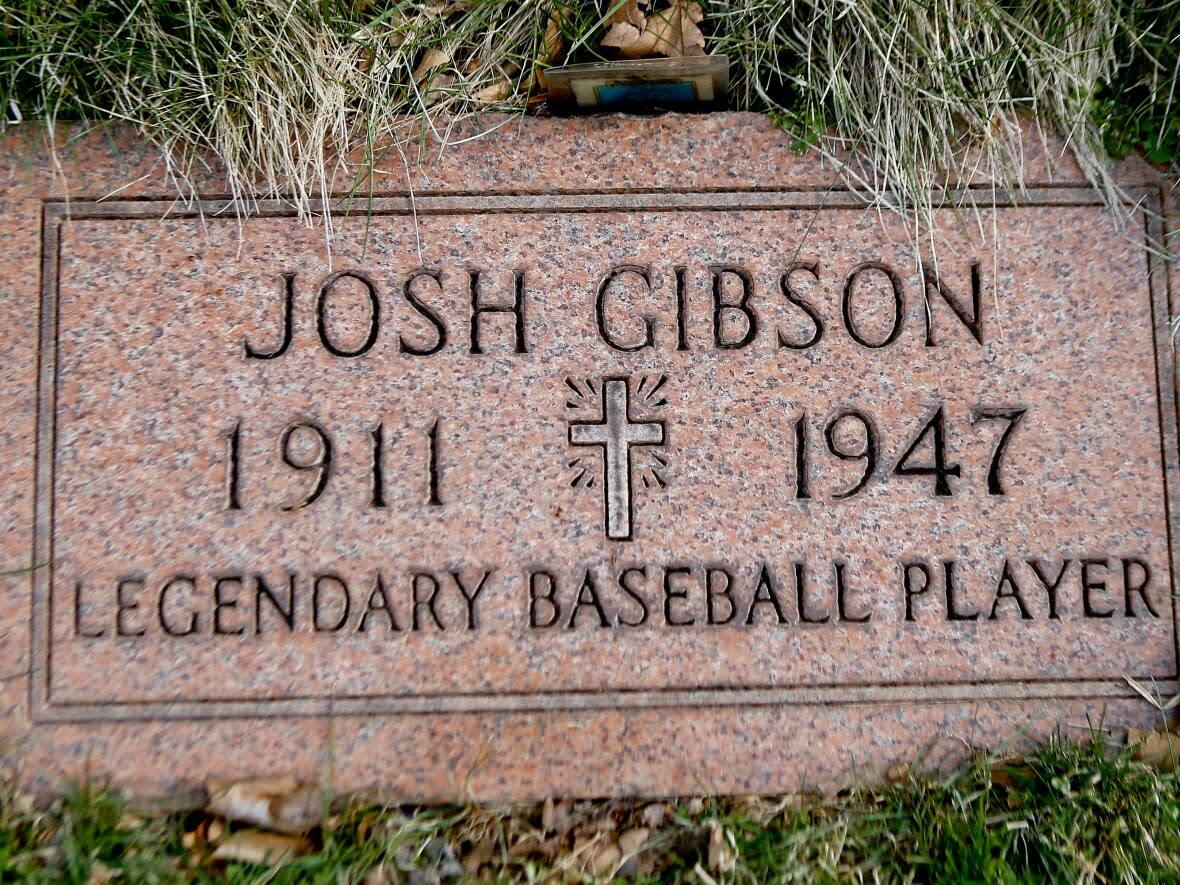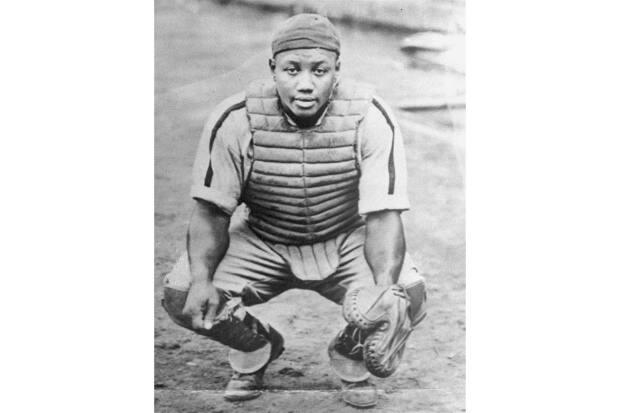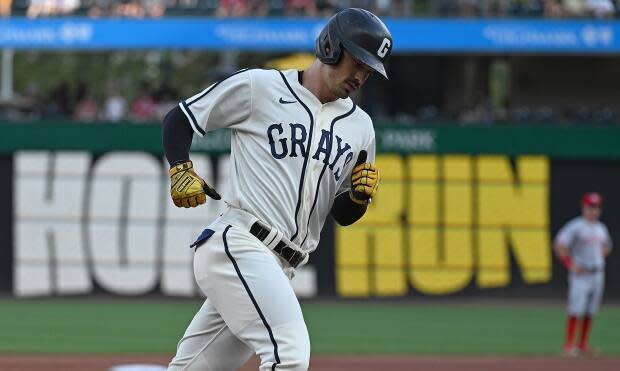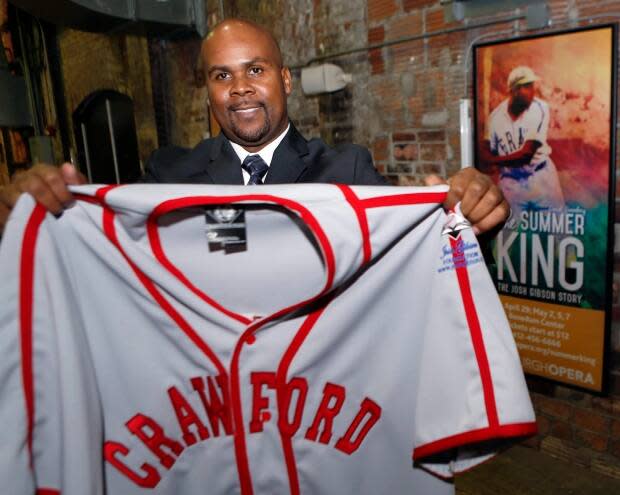He died at just 35 in 1947. Now Josh Gibson is baseball's batting average champ

Josh Gibson, who died just three months before the league's colour barrier was broken, is now the holder of multiple Major League Baseball records as the result of a three-year research project to integrate Negro League accomplishments.
In 2021, MLB announced that it was reclassifying the Negro Leagues to majors to correct a "longtime oversight." The leagues had been excluded in 1969 when a special committee on baseball records identified six other official major leagues dating to 1876.
On Tuesday, league commissioner Rob Manfred announced that the project had come to fruition in a statement. An updated version of MLB's database will become public before the St. Louis Cardinals and San Francisco Giants play a tribute game to the Negro Leagues on June 20 at Rickwood Field in Birmingham, Ala.
Gibson, who racked up most of his stats with the Homestead Grays just outside of Pittsburgh, could hit for average and power in a 16-year professional career spent as a catcher.
"Josh Gibson would have hit home runs in any league, in any era, had he been given the opportunity to do so," Negro Leagues Baseball Museum president Bob Kendrick said earlier this year in a video produced in conjunction with MLB.
As a result of the record book changes, Gibson becomes the career leader in batting average at .372, surpassing Ty Cobb's .367.
Gibson's .466 batting average for the 1943 Homestead Grays is now a historic season standard. Previously, that mark was assigned to Hugh Duffy's .440 average for the National League's Boston team in 1894.
Gibson also became the all-time season leader in slugging percentage ahead of Barry Bonds, and the career leader in the same category ahead of Babe Ruth.
Who was Josh Gibson?
Gibson was born on Dec. 21, 1911, in Buena Vista, Ga. The family moved north during his youth, his father working in Pennsylvania coal mines.
Not unlike Lou Gehrig embarking on his legendary career after an injury to Wally Pipp, Gibson took advantage of a Buck Ewing injury while not yet 19, and soon began wowing fellow players with his exploits on the field.

The stories aren't always verifiable, with Grays teammates Buck Leonard once claiming to have seen Gibson smash a ball 600 feet at Manhattan's Polo Grounds.
At six-foot-one, 220 pounds, he was also a formidable presence behind the plate in a career bookended in Homestead, with a five-year turn in the middle of his career with the Pittsburgh Crawfords.
"He was built like sheet metal. If you ran into him, it was like you ran into a wall," said Hooks Tinker — the last surviving Grays player, who died in 2000 — per Mark Ribowsky's book, Josh Gibson: The Power and the Darkness.
Gibson's life off the field was marked by struggle that went beyond the segregation and racism faced by African Americans. His young wife, Helen, died from complications after giving birth to twins in 1929.
Gibson was said to have struggled with alcohol at times, and Baltimore's Afro American reported in 1943 that he was under observation at a D.C. facility after an arrest for disorderly conduct. But researchers in subsequent decades have raised the possibility his health issues may have played a part — in his early 30s, he had been diagnosed with a brain tumour.
Gibson, just 35, died of complications from a stroke on Jan. 20, 1947. In April that year, Jackie Robinson became the first Black player in the majors, for the Brooklyn Dodgers after a positive experience in the minors in Quebec with the Montreal Royals.
Gibson's death did not go unnoticed in the white press, The Associated Press characterizing him as "one of the greatest distance hitters in the history of baseball" for blasts that went out of the park at Pittsburgh's Forbes Field.
The Black-run Pittsburgh Courier noted that he was the highest paid player in the Negro Leagues — at $6,000 per year, supplemented by about $3,000 earned in the winter months playing in Latin America.
"The king of sluggers is dead … long live the king!" the Courier's editor wrote.
Gibson and Grays teammate Leonard were inducted into baseball's hall of fame in Cooperstown, N.Y., in 1972, one year after legendary pitcher Satchel Paige became the first Negro Leagues star inducted.

Gibson's legacy has been noted by Black artists throughout the years. In 1974, jazz legends Count Basie and Canadian Oscar Peterson released Satch and Josh, in reference to Gibson and Paige, teammates for a time on the Pittsburgh Crawfords.
Troy Maxson, the fictional character in August Wilson's Fences, the Tony-winning play and Oscar-nominated film, is a former Negro Leagues star. He tells Gibson's story, expressing bitterness that he and other ex-players ended up "without a pot to piss in or a window to throw it out."
Move enhances baseball history, Canadian great says
Ferguson Jenkins, a dominant pitcher who was the first Canadian inducted into Cooperstown, welcomed the news.
"It's going to enhance baseball history," Jenkins told CBC News Network on Wednesday. "I think youngsters who really don't know that much about baseball will get that opportunity to maybe read about some players that they just heard of but never seen."
WATCH | Canadian baseball icon discusses importance of statistical update:
Jenkins, originally from Chatham, Ont., won 284 career games pitching for the Philadelphia Phillies, Chicago Cubs, Texas Rangers and Boston Red Sox over the course of his career. During his time on the North Side of Chicago, Jenkins was named to three all-star teams, posted six consecutive 20-win seasons and won the National League Cy Young award for best pitcher in 1971.
His father, Ferguson Jenkins Sr., played for a famous all-Black baseball team in Chatham in the 1930s. In 1934 — one year before Jenkins's father played for the team — the Chatham Coloured All-Stars became the first Black team to win the Ontario Baseball Amateur Association (OBAA) championship.
"People wanted to see them play, but there was always protests from time to time," Jenkins said. "They didn't want to play against players of colour.
"When they won some OBAA championships, I think people really realized that they were a crowd-pleasing group of guys that played good baseball and were successful."
Jenkins, whose No. 31 is retired by the Cubs, hopes for some additional Canadian recognition in the wake of the updated record books.
"There was so many teams in Canada playing, along with teams in Michigan," he said. "I remember [Earl] Flat Chase used to always talk about the Detroit Stars and he always wanted to play against them … and he wanted to prove that he was as good a player as a lot of these guys on the Stars.
"There's a lot of history that have said that Flat Chase hit some balls so far out of parks they couldn't find the ball."
About the record-changing process
Negro Leagues records for more than 2,300 players were incorporated Tuesday. The seven leagues now recognized include:
Negro National League (1920–1931)
Eastern Colored League (1923–1928)
American Negro League (1929)
East-West League (1932)
Negro Southern League (1932)
Negro National League (1933–1948)
Negro American League (1937–1948)
John Thorn, MLB's official historian, chaired a 17-person committee of statisticians and experts in what was often a painstaking process, according to The Associated Press. Researchers had to track dates of birth, and identify whether players with the same name were a single person or separate individuals.
Some game details were obtained from long-ago Black newspapers. Researchers said that while complete accounts were found for about 95 per cent of games in the 1920s, coverage dropped off during the Great Depression in the 1930s.

Even a reputed four-homer game from Gibson in 1938 could not be included because complete game accounts have not been found.
Nevertheless, Sean Gibson, who now runs a baseball foundation in the name of his legendary great-grandfather, reposted several social media statements heralding the Negro League additions on Tuesday.


